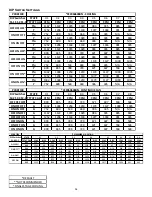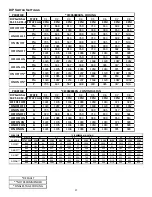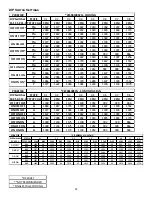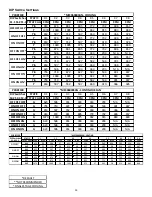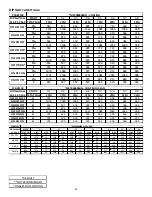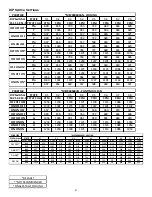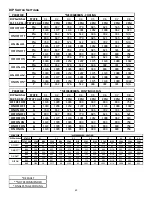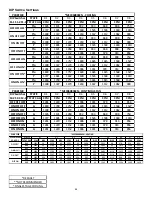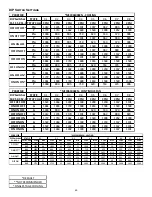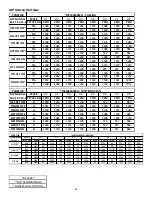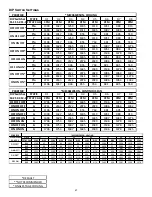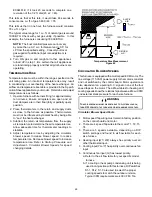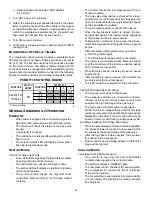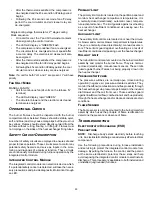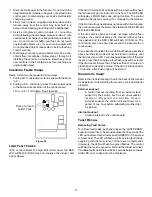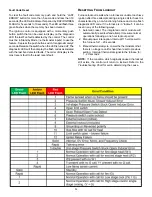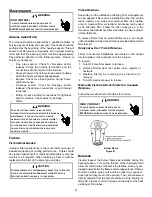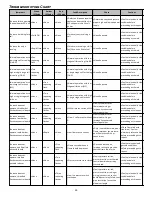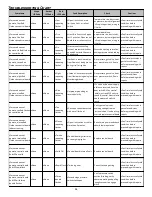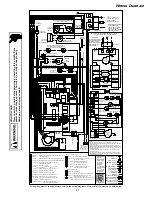
50
Primary Limit
T
he primary limit control is located on the partition panel and
monitors heat exchanger compartment temperatures. It is
a normally-closed (electrically), automatic reset, tempera
-
ture-activated sensor. The limit guards against overheating
as a result of insufficient conditioned air passing over the
heat exchanger.
Auxiliary Limit
The auxiliary limit controls are located on or near the circula
-
tor blower and monitors blower compartment temperatures.
They are a normally-closed (electrically), manual-reset sen
-
sors. These limits guard against overheating as a result of
insufficient conditioned air passing over the heat exchanger.
Rollout Limit
The rollout limit controls are mounted on the burner/manifold
assembly and monitor the burner flame. They are normal
-
ly-closed (electrically), manual-reset sensors. These limits
guard against burner flames not being properly drawn into
the heat exchanger.
Pressure Switches
The pressure switches are normally-open (closed during
operation) negative air pressure-activated switches. They
monitor the airflow (combustion air and flue products) through
the heat exchanger via pressure taps located on the induced
draft blower and the coil front cover. These switches guard
against insufficient airflow (combustion air and flue products)
through the heat exchanger and/or blocked condensate drain
conditions.
Flame Sensor
The flame sensor is a probe mounted to the burner/manifold
assembly which uses the principle of flame rectification to
determine the presence or absence of flame.
Troubleshooting
Electrostatic Discharge (ESD)
Precautions
NOTE:
Discharge body’s static electricity before touching
unit. An electrostatic discharge can adversely affect electrical
components.
Use the following precautions during furnace installation
and servicing to protect the integrated control module from
damage. By putting the furnace, the control, and the person
at the same electrostatic potential, these steps will help
avoid exposing the integrated control module to electrostatic
discharge. This procedure is applicable to both installed and
uninstalled (ungrounded) furnaces.
•
After the thermostat is satisfied, the compressor is
de-energized and the 45 second fan off delay period
begins.
•
Following the 45 second cool mode fan off delay
period, the cool circulator and air cleaner relay are
de-energized.
Single cooling stage thermostat or 2
nd
stage cooling
Mode sequence:
•
On a call for cool, the Y and G thermostat contacts
close signaling the control module.
•
The LED will display a “GREEN”2 flash
•
The compressor and condenser fan are energized.
The circulator fan is energized at cool speed after
a cool on delay. The electronic air cleaner will also
be energized.
•
After the thermostat is satisfied, the compressor is
de-energized and the fan off delay period begins.
•
Following the 45 second fan off delay period, the cool
circulator and air cleaner relay are de-energized.
Note:
If a call for both YLO and Y are present, Y will have
priority.
Fan Only Mode
MANUAL FAN ON:
•
Call for continuous fan (24 volts on the furnace “G”
terminal.)
•
The LED will display rapid “GREEN”.
•
The circulator blower and the electronic air cleaner
terminal are energized.
Operational Checks
The burner flames should be inspected with the burner
compartment door installed. Flames should be stable, quiet,
soft, and blue (dust may cause orange tips but they must not
be yellow). Flames should extend directly outward from the
burners without curling, floating, or lifting off. Flames must
not impinge on the sides of the heat exchanger firing tubes.
Safety Circuit Description
A number of safety circuits are employed to ensure safe and
proper furnace operation. These circuits serve to control any
potential safety hazards and serve as inputs in the moni
-
toring and diagnosis of abnormal function. These circuits
are continuously monitored during furnace operation by the
integrated control module.
Integrated Control Module
The integrated control module is an electronic device which,
if a potential safety concern is detected, will take the neces
-
sary precautions and provide diagnostic information through
an LED.

